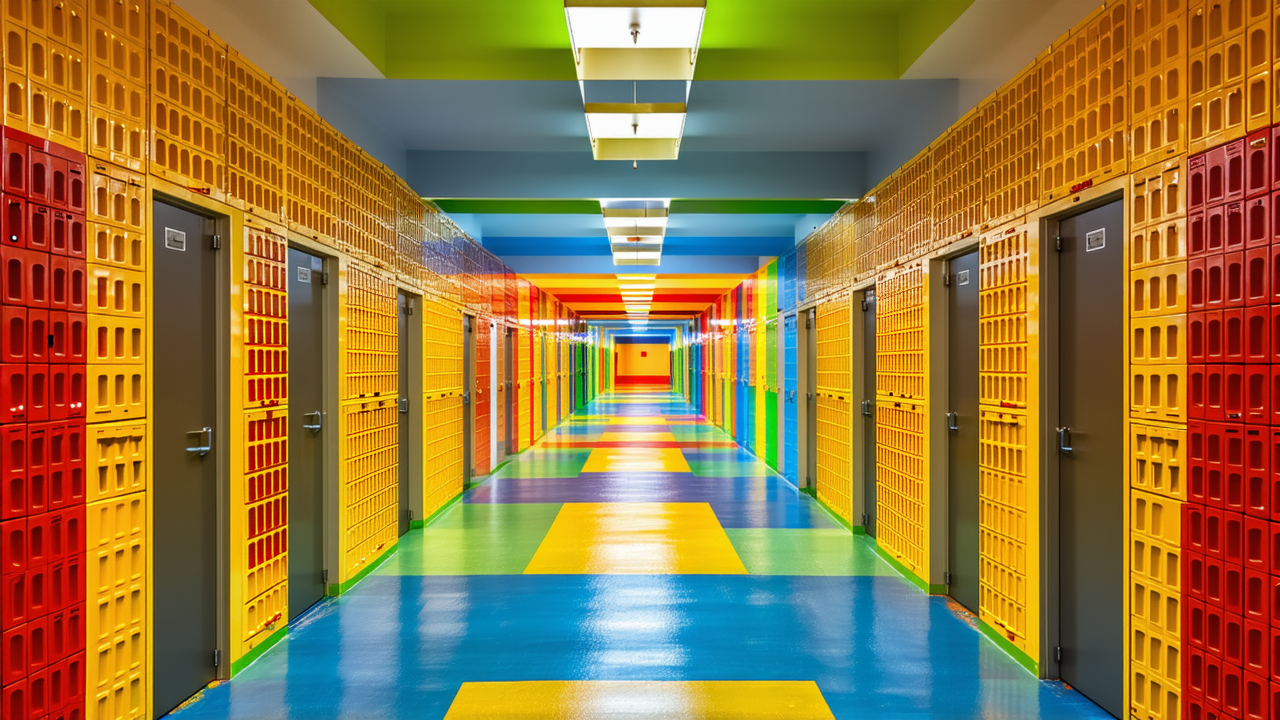New Zealand Prisons Paint Over Oppressive Environments to Improve Rehabilitation
Revamping the Prison Unit: A New Look for New Zealand's Most Dangerous Inmates
Updated: April 2025
As part of a broader effort to humanize correctional environments, New Zealand's most notorious and dangerous criminals—including Brenton Tarrant, the perpetrator of the 2019 Christchurch mosque attacks—are now housed in a prison unit that is undergoing a significant visual transformation. The Prisoners of Extreme Risk Unit (Peru), located at Auckland Prison, also known as Paremoremo, is being repainted with vibrant colors and geometric designs in an effort to reduce the 'oppressive' atmosphere that has long been associated with the facility.
Established in 2019, four months after the March 15 terror attack that left 51 people dead and 40 others injured, the Peru unit is currently home to 13 of the country’s most violent and dangerous inmates. Among them is Tarrant, who was responsible for the mass shootings at the Al Noor and Linwood mosques in Christchurch.
In December 2024, a report by Chief Ombudsman Peter Boshier raised serious concerns about the human rights abuses occurring within the unit. He noted compelling evidence of 'prolonged solitary confinement in oppressive conditions' and described the cumulative impact of these conditions as 'cruel, inhuman, and degrading.' His findings have prompted the Department of Corrections to take immediate action to improve the living conditions for prisoners in the unit.
Leigh Marsh, the commissioner of custodial services for the Department of Corrections, stated that maintenance work is currently underway in the 18-cell unit in response to the Ombudsman’s report and recommendations from the Office of the Inspectorate. The goal, she explained, is to 'create an environment that’s less stark and therefore more conducive to rehabilitating prisoners and better for our staff.'
The repainting project, which is the first of its kind since the unit was built in 2018, includes the redesign of visiting booths, entrance foyers, dayrooms, yards, and cells. The work is being funded from within the Department’s existing budget as part of Budget 2025, though the exact cost of the project has not been disclosed.
According to Marsh, the Department has contracted a commercial painting company to carry out the work. The project includes painting inmates’ cells in shades of green and adding colorful 'geometric designs' to the walls in their adjoining individual yards. Each of the 18 cells will feature the same geometric design in their respective yards.
'Stark environments can create barriers to prisoners engaging constructively with staff and in pro-social activities,' Marsh said. 'That is why the work includes some walls having slightly brighter colors and small geometric designs and shapes such as triangles.'
The Department has emphasized that no murals will be painted on the cell walls, but a basic painted design will be added to the exercise yards. Marsh noted that 'creating brighter spaces and painting artwork within prisons, especially in areas frequently used by staff, visitors and prisoners, is common and something Corrections has done for many years in prisons.'
During the repainting process, inmates have been temporarily relocated to an empty cell within the same unit. The Department has stressed that the safety and security of the prison remains its top priority, and that the physical environment of the prison can significantly impact prisoners’ willingness to engage in rehabilitation programs and activities that support their reintegration into society.
Many of the prisoners in the Peru unit will spend multiple years in highly restrictive regimes, yet they will still need to participate in programs and activities that support their rehabilitation. The transformation of the unit is seen as a step toward creating a more humane and effective correctional environment—one that encourages positive behavioral change and reduces the risk of aggression and tension within the prison.
As this initiative unfolds, it is a clear signal that New Zealand is rethinking its approach to incarceration, moving away from punitive isolation toward a model that prioritizes both safety and the potential for personal growth and rehabilitation among the most challenging inmates in the system.
